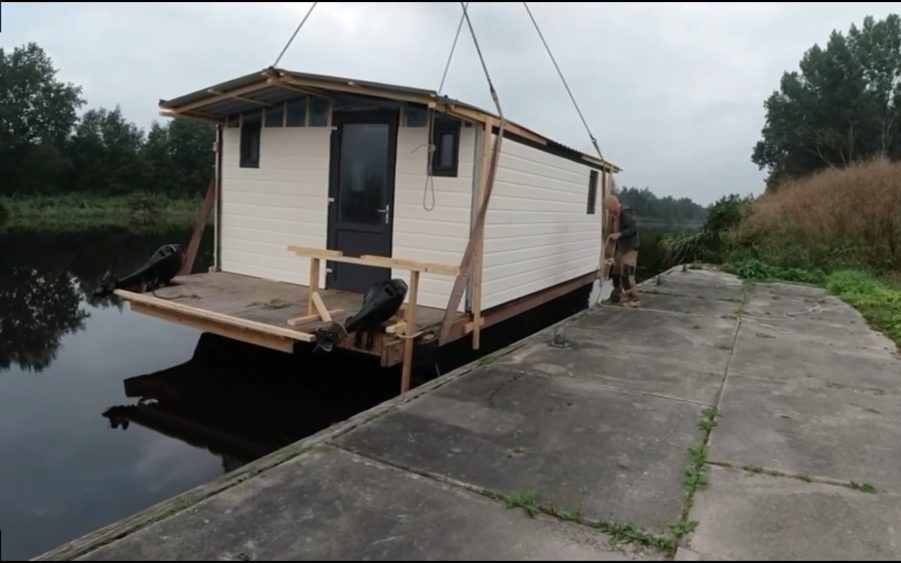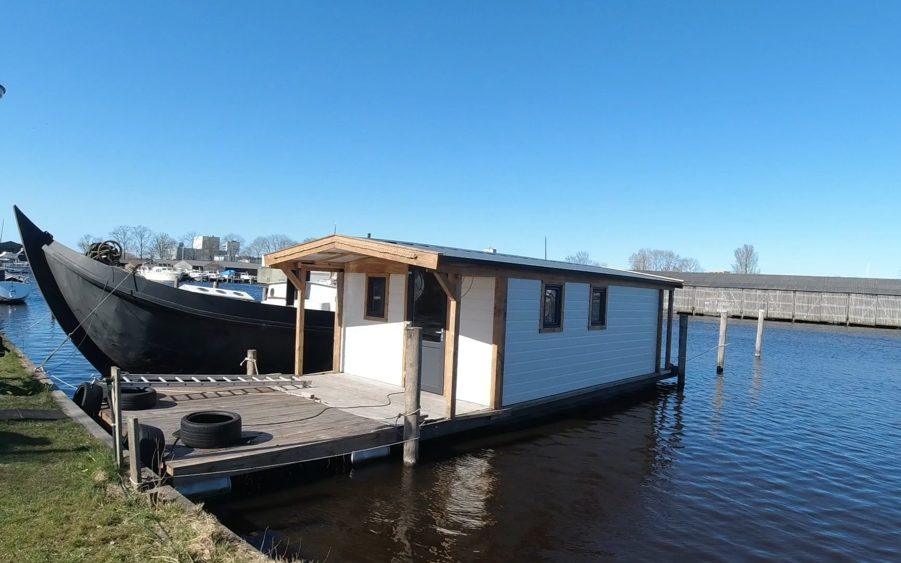Hey there! Have you ever thought of building your very own houseboat? You know, that perfect floating abode where you can experience the calming waves while enjoying the comforts of home. Well, we’re about to embark on the adventurous journey of constructing a DIY Homemade Houseboat. It may seem impossible, but trust me, with the right plan in your hand and some elbow grease, you can fashion your aquatic home sweet home. Let’s get started!
Benefits of a DIY Houseboat
Environmental Benefits
Let’s face it: who wouldn’t want to combine minimal living with an eco-friendly lifestyle? DIY houseboats not only take up less space, but they are also a great way to reduce your carbon footprint. So it’s like hitting two birds with one stone!
Low Cost
You’d be amazed at how cost-effective it is to DIY your own houseboat. With smart budgeting and sourcing of materials, you could be packing your bags to move into your floating dream home without breaking the bank.
Customized Features
And, the best part? You’re the architect here! Your DIY houseboat can incorporate all those personalized elements that a ready-built houseboat wouldn’t offer. Want a mini library with a sea view? Or maybe a rooftop garden? Well, it’s all yours to design!

Essential Skills and Tools Needed
Basic Boat Building Skills
Don’t worry if you can’t differentiate a warping tug from a gaffe. All you need are basic woodworking fundamentals, an understanding of measurements and blueprints, and a dash of perseverance!
Necessary Tools
Start filling your toolbox with essentials like a jig saw, drill, hammer, screwdriver, sander, clamps, and a good layout square. And don’t forget the crucial safety gear!
Building the Hull
Crafting the hull involves several crucial steps:
Step 1: Constructing the Frame
Start by laying down the keel (the backbone of the hull) according to your houseboat plan. Attach the stern and bow posts to the keel. Now, connect the ribs (or frames) to assemble the boat’s skeleton.
Step 2: Planking
Once you have a sturdy frame, it’s time to cover it with planks. Start from the keel and work your way towards the sides. Make sure they fit snugly to avoid leakage.
Step 3: Waterproofing
Apply marine-grade epoxy resin and fiberglass tape to the boat hull for waterproofing. Let it cure completely before proceeding.
Step 4: Sanding
Sand the hull’s exterior with coarse grit sandpaper for a smooth finish. Finish by applying a coat of marine-grade paint.
Creating the Deck
The deck is essentially the floor of your houseboat. Here’s how you can create it:
Step 1: Framing
Frame out your deck on top of the hull using treated lumber. Attach beams across and adhere to the plyboard over the beams to create a walking surface.
Step 2: Waterproofing
To avoid rotting and leakage, it’s vital to waterproof the deck. Apply a thick layer of liquid rubber deck coating or marine-grade paint for this purpose.
Step 3: Flooring
Finally, install the waterproof and slip-resistant flooring of your choice. Vinyl flooring or artificial marine deck covering are good options.
Constructing the Interior
Now, let’s head inside and start fitting out the interior:
Sleeping Quarters
Step 1: Designing Layout
The first step is to figure out your ideal layout. Keep it simple, as space is limited. A loft-style bed is a smart space saver.
Step 2: Building
Next, construct a sturdy frame for your bed space using plywood. Consider storage under the bed.
Step 3: Finishing Touches
Finish up with a comfy mattress, curtains for privacy and warmth, and personalized décor to make it homey.
Kitchen Space
Step 1: Planning
Creating a well-planned layout in the kitchen is crucial. Measure the areas for your appliances to make sure they fit before installation.
Step 2: Installing Features
Next, install the cabinets, countertops, sink, and appliances. Be sure to secure everything for rough waters.
Step 3: Extra Touches
Add in some extra touches like beautiful backsplashes and good lighting to make your kitchen more inviting.
Bathroom
Step 1: Space Utilization
Wisely utilize your space for the bathroom. Wet rooms are a great option, with a shower head installed over the toilet to save space.
Step 2: Installing
Install a marine toilet, sink, and compact storage to keep it functional. Do remember ventilation for this area.
Step 3: Waterproofing
Because this area will be continually wet, use marine-grade paint to avoid any water damage.
This just covers the primary construction elements of the houseboat. We’ll still need to consider the electrical system, plumbing, insulation, ventilation, painting, furnishing, etc.

FAQs
How much does it cost to build a houseboat?
Building your own DIY homemade houseboat can save you serious money, but estimating the total cost is difficult. You will need to budget for materials, equipment, and time.
Materials: expect to spend a few hundred dollars on lumber and plywood for framing the boat and hundreds more if you want to buy windows or other fixtures. Add a few hundred dollars for plumbing, electrical wiring, and insulation.
You could spend anywhere from $2,000 to $5,000 or more on materials alone.
Equipment: you will need a welder, drill, and other power tools.
Do you need a permit to build a houseboat?
There is no need for a permit to build a houseboat, but you may need a permit to moor your boat in the water. You should check with local authorities before starting construction. Regulations may vary depending on the location.
How to launch your houseboat?
To launch your houseboat, you need to find a place to dock it and purchase the necessary supplies. You’ll also need to prepare the boat for launch by cleaning it and filling any empty spaces with water. Finally, you’ll need to tie the boat down and wait for the waves to carry it away.
What are the ongoing costs of owning a houseboat?
There are a lot of factors that come into play when it comes to owning a houseboat. Maintenance can be expensive, as can fuel and docking fees. Beyond that, there are a lot of other costs that come with owning a houseboat, like insurance and property taxes. You must budget for these expenses when you purchase or lease a houseboat.
Do I need insurance for my houseboat?
Houseboats can be expensive investments; therefore, it’s essential to protect them if something goes wrong. There are a few different ways to do this: by getting an insurance policy or taking out liability insurance.
The most important thing is to ensure you have enough information about the insurable value of your boat before making any decisions – this will help determine what kind of coverage you need and how much it’ll cost you.
What are the benefits of owning a houseboat?
Houseboats are great for people who want to travel and enjoy the outdoors without worrying about their car. They’re also perfect for hosting guests on the water. And because they’re so versatile, you can use them for all sorts of activities, from fishing to cruising. Owning a houseboat is also a unique way to live; you get all the benefits of living in an apartment or condo with much more space.
What are the risks of owning a houseboat?
Several risks are associated with owning a houseboat, some related to the boat’s seaworthiness. If the boat isn’t properly built or maintained, it could sink or get damaged in sea conditions, leading to loss of money and possibly even injury.
Another common risk is that someone may steal your houseboat—if it’s left unsecured on the water, it’s at risk of theft by thieves who would then resell it for a profit.
Other risks include storm damage (such as flooding) and vandalism (such as graffiti).
It’s essential to keep these risks in mind when considering whether or not to buy or lease a houseboat; if you’re worried about any of them, speak to an expert before making any decisions.

